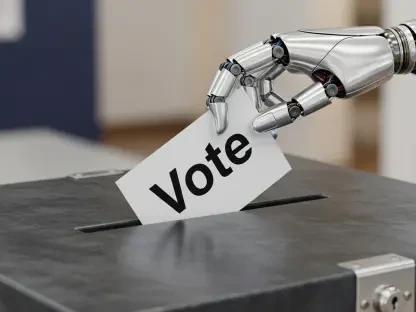In an era where privacy concerns intersect with technology’s rapid advancements, facial recognition technology has found itself at a contentious crossroads, particularly within the realm of surveillance. Notably, in New York City, legal and ethical debates have ensued following its application to identify pro-Palestinian protester Zuhdi Ahmed. Law enforcement’s reliance on this technology, coupled with inter-agency collaborations, has amplified discussions about privacy rights and the boundaries governing surveillance. Within this review, the core aspects and performance of facial recognition technology will be analyzed, giving insight into its present capabilities and future potential.
Facial Recognition Technology: Core Principles and Components
Facial recognition technology operates through a sequence of key components that work cohesively to identify individuals. At its root are image acquisition systems where cameras capture an individual’s face under various circumstances, routinely collated across multiple sources, including social media profiles. This capability is central to the technology’s efficacy, allowing law enforcement to utilize visual databases as identification sources. With increasing digital footprints, image acquisition represents a robust foundation that drives facial identification efforts.
Once images are gathered, data processing and analysis take precedence. Algorithms scan facial features, comparing them with enormous databases to identify matches accurately. The technology’s prowess lies in its ability to filter and analyze vast amounts of data swiftly, drawing insights that aid law enforcement in pinpointing suspects with precision. Such capabilities are indispensable, albeit linked with concerns over ethical usage and privacy encroachments. Real-world applications demonstrate its potential to revolutionize identification methods, although these same applications have raised public debates on accountability and fairness.
Recent Trends and Innovations
With innovation at its core, facial recognition technology continues to evolve, shaped by recent trends and breakthroughs. Current advancements in AI have enhanced the precision and accuracy of facial recognition systems, expanding their application beyond security and surveillance. Augmented by AI, these systems have seen significant improvements in feature extraction and matching capabilities, ensuring more accurate identifications even in challenging conditions. However, these technological strides have intensified debates over ethical use and privacy intrusions, provoking conversations surrounding responsible deployment and regulation.
Emerging trends signal a shift in consumer and industry behavior, as facial recognition applications move beyond conventional security into sectors such as retail and hospitality. Businesses leverage these advancements to enrich customer experiences and streamline operations, adapting the technology to suit varying contexts. A notable trend in the surveillance sphere includes heightened scrutiny over inter-agency collaborations, demanding increased transparency and regulatory oversight to safeguard privacy rights effectively.
Practical Applications of Facial Recognition
Facial recognition technology is not confined solely to law enforcement; its application in real-world scenarios spans numerous sectors. In retail, businesses adopt facial recognition to customize customer experiences, enhancing service personalization for returning clientele. Hospitality venues integrate this technology for streamlined check-ins, offering efficient services to guests while optimizing workforce management. Additionally, transportation hubs employ facial recognition systems to bolster security, ensuring passenger safety through advanced screening processes.
Unique use cases arise in political protests, where law enforcement’s application of facial recognition sparks significant debate over civil liberties and privacy. Protesters fear the implications of unwarranted surveillance and potential repercussions as technology allows agencies to monitor political activities extensively. Such applications highlight both its potential benefits and concerning misuse, underscoring the importance of ethical deployment, balancing security with individual freedoms.
Challenges and Constraints
Despite its promising capabilities, facial recognition technology faces several challenges hindering widespread adoption. Ethical concerns around privacy intrusion and data misuse form the crux of objections, with critics highlighting potential biases and accuracy discrepancies affecting ethnic minorities disproportionately. Regulatory gaps further complicate matters, as laws struggle to keep pace with technology’s rapid iterations. Navigating these challenges involves not only technical advancements but forging stronger legislative frameworks addressing data privacy, ethics, and accountability.
Efforts toward mitigating these challenges include advocacies pushing for transparent policies and coordinating legislative reforms that protect privacy rights while allowing technological growth. Initiatives now steer government agencies toward adopting stricter guidelines, ensuring the technology is deployed judiciously, focusing on public safety without compromising individual freedoms.
Future Developments and Speculation
Looking ahead, facial recognition technology is positioned to expand its influence beyond traditional spheres, driven by AI advancements and collaborative innovations. It promises enhanced accuracy and efficiency, adapting to various industries while revolutionizing identification processes. Yet, its trajectory depends heavily on regulatory evolution, ensuring agencies harness its potential securely, without infringing on civil rights. Anticipated breakthroughs in ethical AI algorithms and privacy safeguarding measures could redefine public perceptions, fostering acceptance while maintaining vigilance on intended applications.
Verdict and Insights
The incident involving the NYPD and FDNY’s leveraging of facial recognition underscores ongoing debates about privacy, surveillance, and accountability. These events catalyzed dialogues surrounding ethical use and governance of technology in law enforcement, urging renewed legislative focus and regulatory reforms enhancing transparency. Moving forward, technological and legislative convergence will be pivotal in steering facial recognition applications, securing its role in enhancing security while respecting personal freedoms. Ensuring ethical standards and accountability mechanisms will remain crucial, guiding future iterations and fostering public trust in the technology’s deployment.









